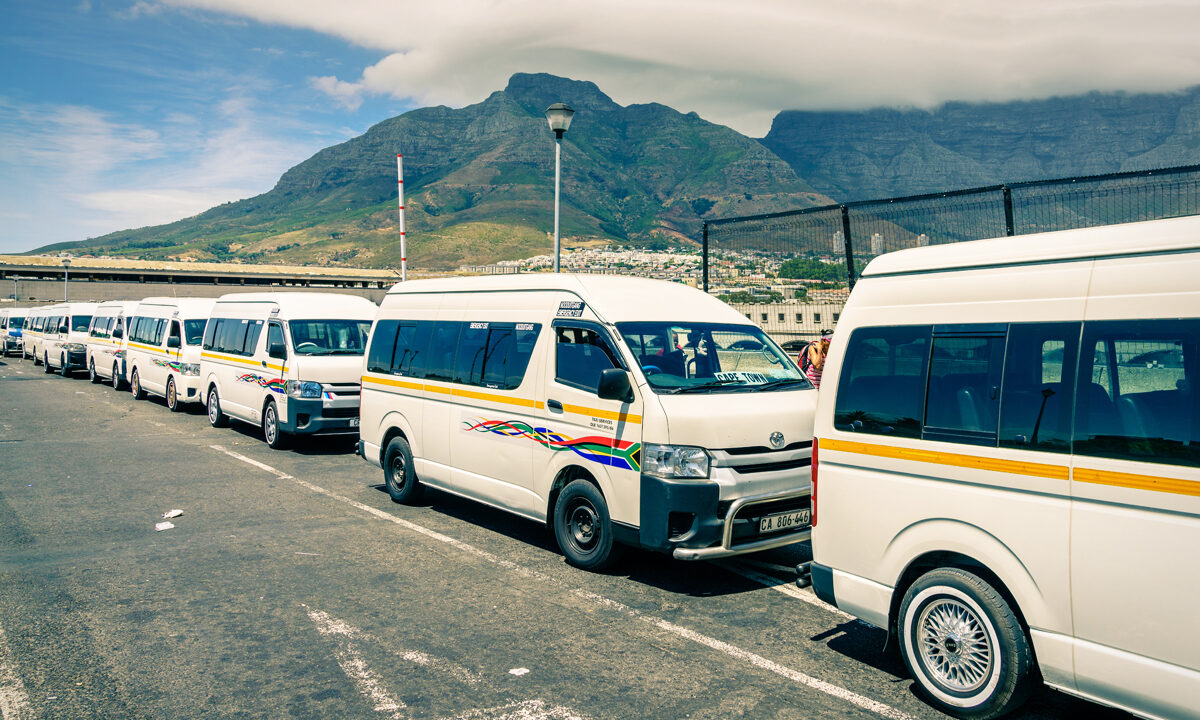
Source: Business Tech
South Africa’s first electric-powered taxi is being trialled thanks to a team from Stellenbosch University (SU).
According to Prof Thinus Booysen of the Department of Industrial Engineering at SU, South African manufacturers now have a small window to open more plants to create electric vehicles.
While most locally-manufactured petrol cars are being exported, developing countries are plotting their transition to electric vehicles. As a result, this critical aspect of the South African export economy could dry up by 2035.
“Remaining in the slow lane of the electric vehicle transition could put thousands of jobs at risk,” said Booysen. “The automotive industry and our government cannot afford to be asleep at the wheel.”
With this in mind, Booysen and his team at SU worked with Rham Equipment to retrofit a minibus taxi with electric propulsion.
The vehicle is currently being trialled for road testing, after which, performance testing will commence.
“More than 70% of the trips in South Africa are by minibus in the informal sector, which is why we are hoping to encourage the retrofitting of some of the 250 000 minibuses in the country with electric propulsion. These will be cheaper and much more environmentally friendly than new electric vehicles,” Booysen said.
“With this venture, we want to help build the skills that will be needed to manufacture electric vehicles locally and also create awareness about how much we could save with electric taxis.”
Design
One of the team members, Stephan Lacock, said the team removed the minibus’ internal combustion engine and all other associated components, including the petrol tank, manual transmission, gas pipe, and radiator.
“Overcoming design challenges, Rham Equipment and our research team have successfully created a reproducible ‘kit’ that includes the main components of the electric powertrain or system that propels the vehicle forward,” Lacock said.
“These include an electric motor, inverter, charger, electronic control unit, and a single-speed reduction gearbox. The powertrain is skilfully connected to a custom-designed battery pack that meets the specific operational needs of a minibus.”
He noted that the new minibus has an advanced regeneration system that harnesses energy generation during deceleration and downhill driving, improving the vehicle’s energy efficiency and overall range.
“As a result, the minibus is now equipped to travel an estimated range of approximately 120 km, with a maximum speed of 120 km/h. It has an electric motor power of 90 kW and a battery capacity of 53.76 kWh,” Lacock said
“This ensures that it meets all load and driving requirements comparable to those of traditional internal combustion engine minibuses. Moreover, the electric powertrain brings enhanced agility and an exhilarating driving experience to the minibus.”
“Thanks to the inclusion of a 20 kW charger, the minibus can be efficiently charged in just over two hours.”
He added that future advancements in technology should lead to more improvements in charging times, longer driving ranges and overall performance.
Load shedding pain
Despite being optimistic about the retrofitting of taxis, Booyen said that employing them could be challenging due to the nation’s energy crisis.
“We need to look at what the impact would be if we add an extra load of electric vehicles to the grid. Given that people who can buy electric vehicles can also afford to install fast charges, the impact of those vehicles will quickly slay a grid already on its knees,” he said.
“With petrol and diesel vehicles, we could drive to the nearest gas station because there was adequate infrastructure, sufficient ‘range’ on a tank, and the refilling was quick. With electric vehicles, the problem is the ‘filling’ takes a long time, and the range and energy source are limited.”
However, team member Johan Giliomee said that these minibus taxis could be supplied via the installation of solar panels and battery energy storage systems at taxi ranks. He added that hydrogen could also be used as an alternative electricity source or for interim energy storage.
“The vast majority of taxis are stationary between the early morning and afternoon peaks, making it an ideal opportunity for charging from solar panels,” Giliomee said.
“This also means a single charge would only need to supply sufficient energy for half the day, significantly reducing the required battery capacity as opposed to being scaled to support a full day’s operations. Further ideal charging opportunities are seen overnight when the national electricity demand is at its lowest.”
Booysen suggested shifting the focus of the national discussion on electric vehicles to encompass a system-based approach to electric mobility that includes decentralized electricity provision in light of the nation’s energy woes.
“We must think anew about how we buy a car; it must be sold as part of a mobility package, that is, the car, solar panels and a large battery as a system, rather than just an electric car that will mess up our grid and will be restricted by our grid,” he said.
He added that the next stage of the project will see a Golden Arrow Bus retrofitted.
Below are some images of the retrofitted taxi:



Source: Business Tech












